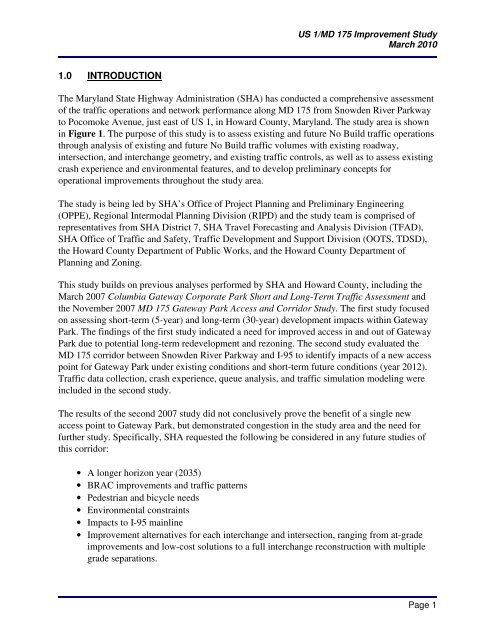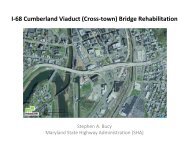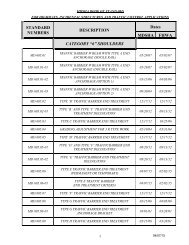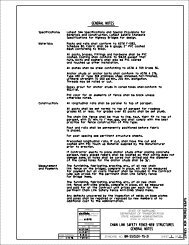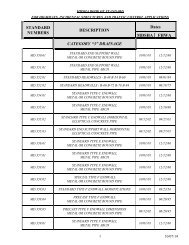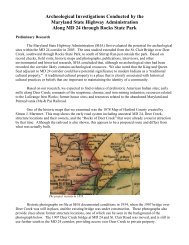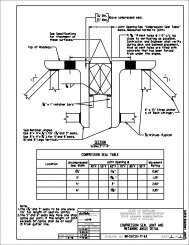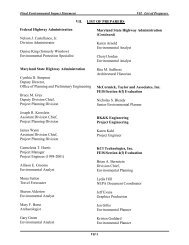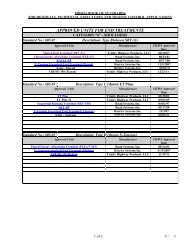US 1 / MD 175 Improvement Study Phase I Final Report March 2010
US 1 / MD 175 Improvement Study Phase I Final Report March 2010
US 1 / MD 175 Improvement Study Phase I Final Report March 2010
- No tags were found...
You also want an ePaper? Increase the reach of your titles
YUMPU automatically turns print PDFs into web optimized ePapers that Google loves.
<strong>US</strong> 1/<strong>MD</strong> <strong>175</strong> <strong>Improvement</strong> <strong>Study</strong><strong>March</strong> <strong>2010</strong>1.0 INTRODUCTIONThe Maryland State Highway Administration (SHA) has conducted a comprehensive assessmentof the traffic operations and network performance along <strong>MD</strong> <strong>175</strong> from Snowden River Parkwayto Pocomoke Avenue, just east of <strong>US</strong> 1, in Howard County, Maryland. The study area is shownin Figure 1. The purpose of this study is to assess existing and future No Build traffic operationsthrough analysis of existing and future No Build traffic volumes with existing roadway,intersection, and interchange geometry, and existing traffic controls, as well as to assess existingcrash experience and environmental features, and to develop preliminary concepts foroperational improvements throughout the study area.The study is being led by SHA’s Office of Project Planning and Preliminary Engineering(OPPE), Regional Intermodal Planning Division (RIPD) and the study team is comprised ofrepresentatives from SHA District 7, SHA Travel Forecasting and Analysis Division (TFAD),SHA Office of Traffic and Safety, Traffic Development and Support Division (OOTS, TDSD),the Howard County Department of Public Works, and the Howard County Department ofPlanning and Zoning.This study builds on previous analyses performed by SHA and Howard County, including the<strong>March</strong> 2007 Columbia Gateway Corporate Park Short and Long-Term Traffic Assessment andthe November 2007 <strong>MD</strong> <strong>175</strong> Gateway Park Access and Corridor <strong>Study</strong>. The first study focusedon assessing short-term (5-year) and long-term (30-year) development impacts within GatewayPark. The findings of the first study indicated a need for improved access in and out of GatewayPark due to potential long-term redevelopment and rezoning. The second study evaluated the<strong>MD</strong> <strong>175</strong> corridor between Snowden River Parkway and I-95 to identify impacts of a new accesspoint for Gateway Park under existing conditions and short-term future conditions (year 2012).Traffic data collection, crash experience, queue analysis, and traffic simulation modeling wereincluded in the second study.The results of the second 2007 study did not conclusively prove the benefit of a single newaccess point to Gateway Park, but demonstrated congestion in the study area and the need forfurther study. Specifically, SHA requested the following be considered in any future studies ofthis corridor:• A longer horizon year (2035)• BRAC improvements and traffic patterns• Pedestrian and bicycle needs• Environmental constraints• Impacts to I-95 mainline• <strong>Improvement</strong> alternatives for each interchange and intersection, ranging from at-gradeimprovements and low-cost solutions to a full interchange reconstruction with multiplegrade separations.Page 1


